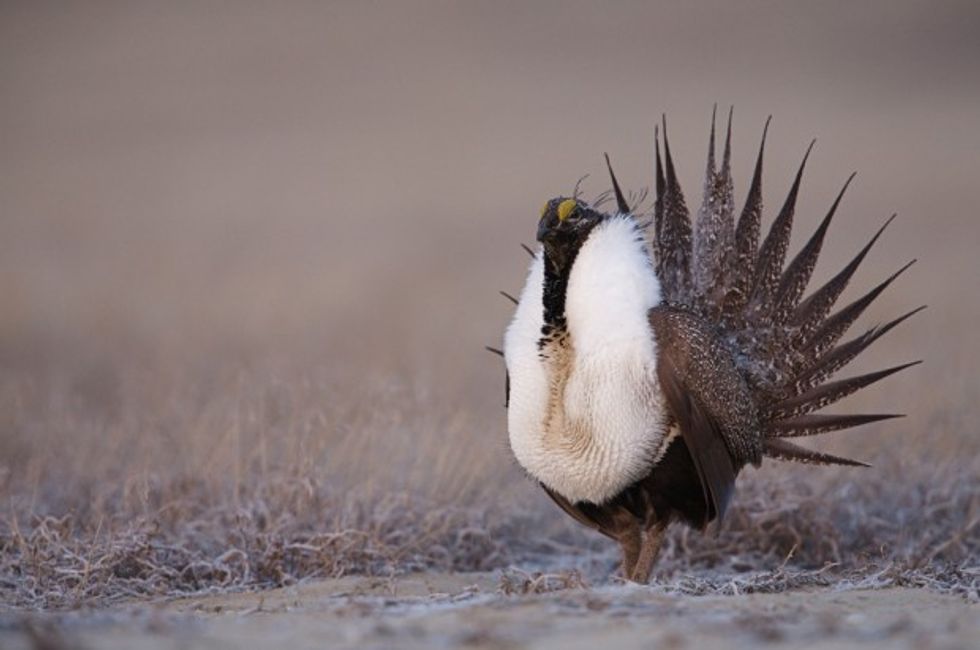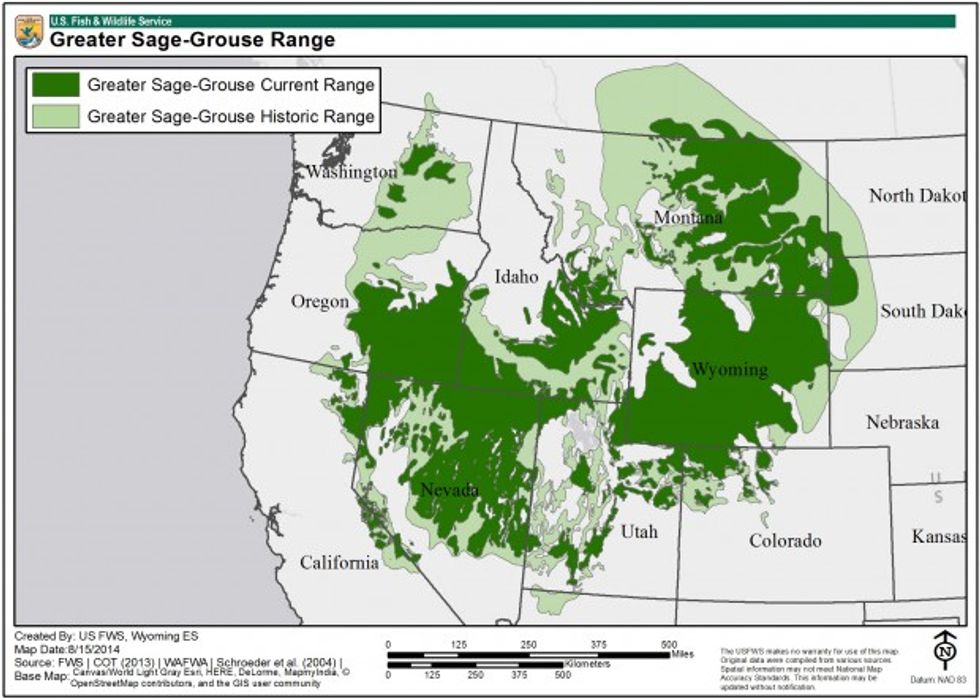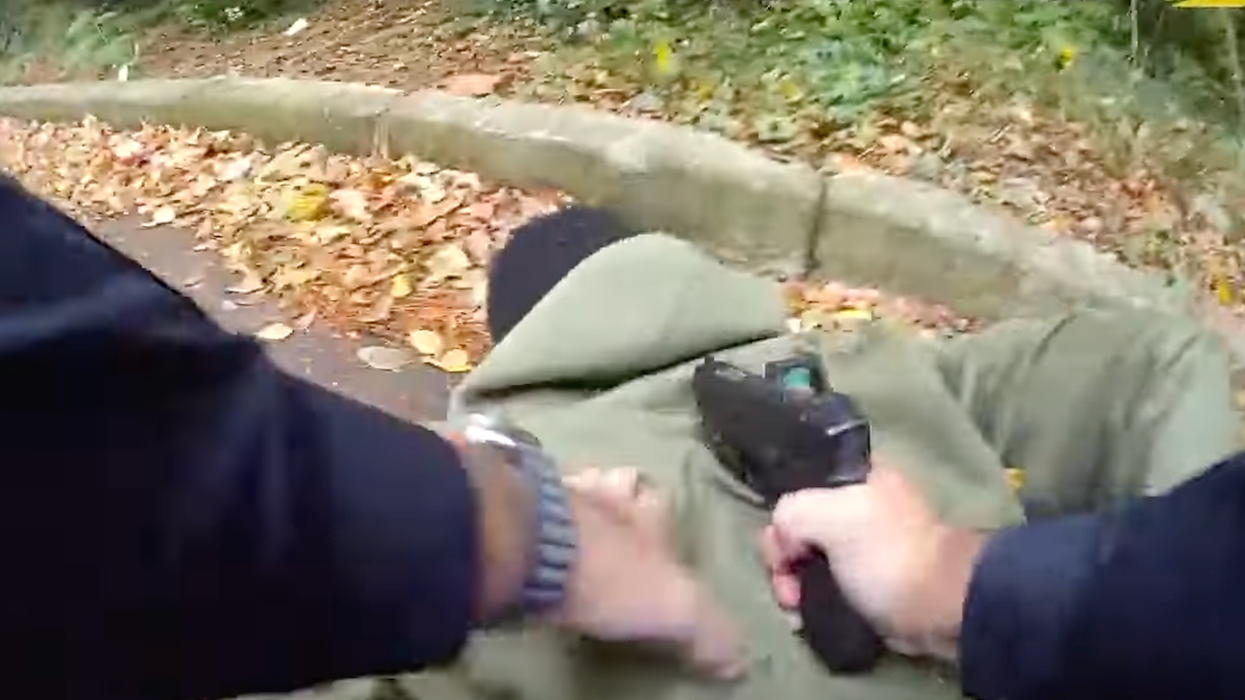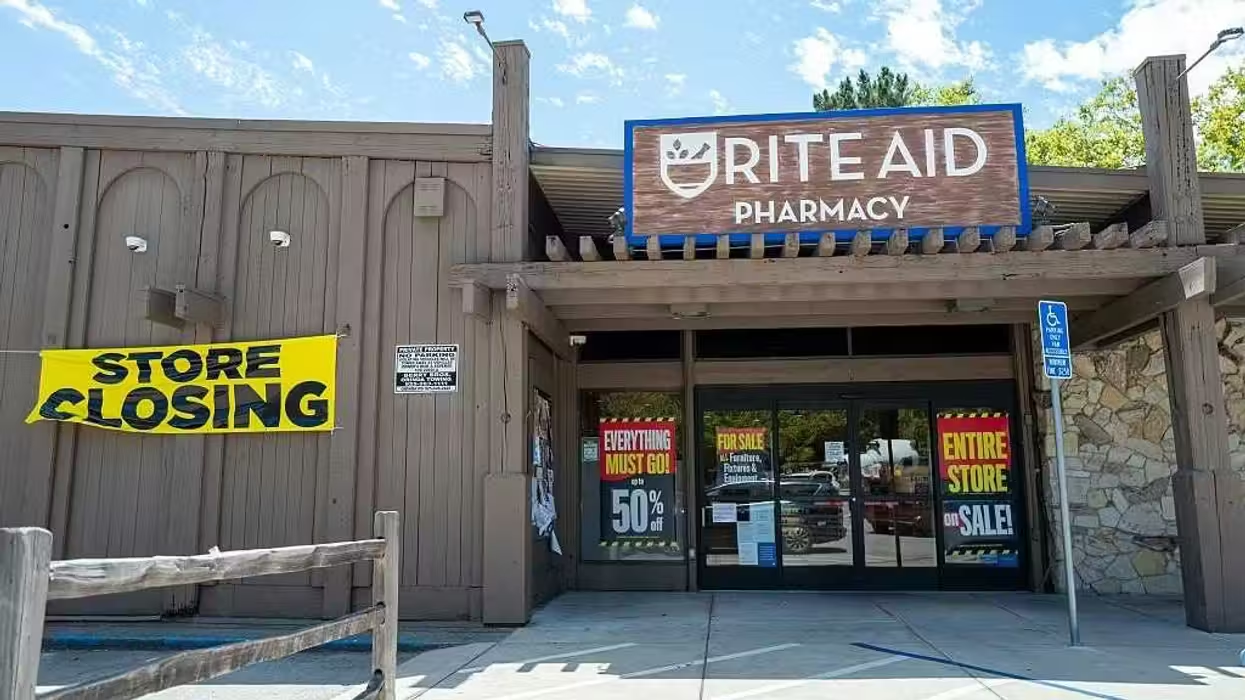
© 2025 Blaze Media LLC. All rights reserved.
"Proves that collaborative conservation can work.”
BILLINGS, Mont. (TheBlaze/AP) -- The Interior Department said Tuesday that the greater sage grouse, a ground-dwelling bird whose vast range spans 11 Western states, does not need federal protections following a costly effort to reverse the species' decline without reshaping the region's economy.
The fight over whether to list the bird as endangered or threatened recalled the battle over the spotted owl 25 years ago, where federal protection greatly impeded the logging economy. The Obama administration and affected states have committed hundreds of millions of dollars to saving the species without Endangered Species Act protections that many argued would threaten the oil and gas industry and agriculture.

Tuesday's announcement signaled that the Obama administration believes it has struck a delicate balance to save the birds from extinction without crippling the West's economy.
"Because of an unprecedented effort by dozens of partners across 11 western states, the U.S. Fish and Wildlife Service has determined that the greater sage-grouse does not require protection under the Endangered Species Act," the Interior Department's website stated on the decision.
The decision, some thing, could defuse a potential political liability for Democrats heading into the 2016 election; federal protections could have brought much more sweeping restrictions on oil and gas drilling, grazing and other human activities from California to the Dakotas.
Interior Secretary Sally Jewell said her agency's decision shows that federal wildlife laws can serve as a "catalyst for conservation" while still allowing for economic development. Jewell was to make a formal announcement later Tuesday at the Rocky Mountain Arsenal National Wildlife Refuge just north of Denver.
Watch her message posted online:
Environmentalists who sued to force Tuesday's decision were certain to challenge it, while industry groups and some Western governors argue that measures already enacted to prop up the bird's population go too far.
Some like the North American Grouse Parternship echoed Jewell's message.
“For years, sportsmen, ranchers, developers and biologists have anxiously awaited the day when the sage grouse listing decision would be made,” Steve Riley, president and CEO of the North American Grouse Partnership, said in a statement. “Now, it is imperative that these collective conservation efforts are implemented and monitored for effectiveness in the long-term if we are to avoid winding up with sage grouse again at risk further down the road.”
Whit Fosburgh, president and CEO of the Theodore Roosevelt Conservation Partnership, said in a statement that today's decision "proves that collaborative conservation can work.”
“But it is critical that state and federal agencies enforce the full implementation of their plans and that we continue to oppose Congressional attempts to weaken them," he added.
Greater sage grouse once numbered in the millions. Over the last century, the bird lost roughly half its habitat to development, livestock grazing and an invasive grass that's encouraging wildfires in the Great Basin of Nevada and adjoining states. An estimated 200,000 to 500,000 occupy sagebrush habitat spanning the 11 states.
The finding reverses a 2010 determination that the sage grouse were in precipitous decline. Under a federal court settlement, the U.S. Fish and Wildlife Service faced a Sept. 30 deadline to decide the birds' status one way or the other.
 A government study recommended keeping oil and gas drilling, wind farms and solar projects more than 3 miles away from the breeding grounds of a bird that ranges across much of the Western U.S. a finding that could carry significant impacts for the energy industry as the Obama administration weighs whether the greater sage grouse needs more protections after seeing its population plummet in recent decades. (AP/U.S. Fish and Wildlife Service,Tom Koerner)
A government study recommended keeping oil and gas drilling, wind farms and solar projects more than 3 miles away from the breeding grounds of a bird that ranges across much of the Western U.S. a finding that could carry significant impacts for the energy industry as the Obama administration weighs whether the greater sage grouse needs more protections after seeing its population plummet in recent decades. (AP/U.S. Fish and Wildlife Service,Tom Koerner)
Republicans cast the issue as evidence of endangered species laws run amok. Congress last year voted to block Fish and Wildlife from spending money on any proceedings to change the bird's legal status.
The Obama administration has poured hundreds of millions of dollars into conservation measures in hopes of patching together enough sagebrush habitat to ensure the bird's long-term survival. The administration also worked with state governments to adopt their own habitat protection plans, which included local restrictions on energy development and setting aside private and public lands as habitat.
Federal land-use documents were rewritten to put 12 million acres of public lands under new rules that sharply limit oil and gas development, officials said. The administration also is proposing to withdraw mining claims on 10 million acres considered key grouse habitat.

Under Tuesday's announcement, sales of oil and gas leases that were previously deferred on more than 8 million acres will undergo a 90-day review before a final decision is made.
At the center of the fracas has been Wyoming, home to roughly 40 percent of the bird's population and a hub of fossil fuel development, with huge potential for wind energy and uranium mines.
Efforts to avoid protections in Wyoming have resulted in a significant impact: No drilling may take place near vital sage grouse breeding grounds during nesting season. Oil and gas wells in areas deemed as core habitat for the birds must be clustered together and directionally drilled from well pads.
Other states have adopted similar plans.
Want to leave a tip?
We answer to you. Help keep our content free of advertisers and big tech censorship by leaving a tip today.
Want to join the conversation?
Already a subscriber?
more stories
Sign up for the Blaze newsletter
By signing up, you agree to our Privacy Policy and Terms of Use, and agree to receive content that may sometimes include advertisements. You may opt out at any time.
Related Content
© 2025 Blaze Media LLC. All rights reserved.
Get the stories that matter most delivered directly to your inbox.
By signing up, you agree to our Privacy Policy and Terms of Use, and agree to receive content that may sometimes include advertisements. You may opt out at any time.






